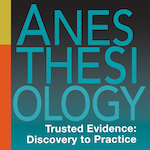COVID-19 pandemic erased decade of global progress on life expectancy

Editor's Note A nearly 2-year drop in global life expectancy from 2019 to 2021 indicates that the COVID-19 pandemic effectively erased decade of progress, according to The World Health Organization’s 2024 World Health Statistics report. According to May 24 Healio report on WHO’s findings, global life expectancy dropped by 1.8…
Study: COVID-19 could elevate risk of surgical mortality, complications

Editor's Note Due to its impact on a variety of organ systems, COVID-19 could elevate perioperative risks even among patients with mild symptoms, according to a study published in the February 2024 issue of Anesthesiology. Focused on patients presenting for elective inpatient surgery between April 2020 and April 2021, the…
New COVID-19 surge led by JN.1 variant raises alarm amid 'tripledemic,' recent CDC data

Editor's Note Many people have reportedly been experiencing cold-like symptoms this winter, which have often been attributed to “some bug”; however, there’s a strong chance these symptoms were due to a new surge of COVID-19, Wired January 10 reports. There’s a new, large global surge in daily COVID-19 infections currently…
Social distancing outperforms closing borders in preventing virus spread
Editor’s Note Social distancing was more effective than closing borders in preventing the spread of COVID-19, according to a study published in Cell December 14. Conducted by Scripps Research, the study examined the efficacy of various mandates—including stay-at-home measures, social distancing, and travel restrictions— in preventing local and regional transmission…
Meditation during COVID-19 led to significant benefits for frontline nurses
Editor's Note According to a new study, transcendental meditation significantly benefitted the mental health and well-being of frontline nurses during the COVID-19 pandemic. The findings were published in the Journal of Nursing Administration on December 11. Transcendental Meditation, or TM, involves sitting with the eyes closed for 20 minutes to…
Navigating the ‘tripledemic’: Flu, RSV, and COVID-19 in the OR

The healthcare sector has begun grappling with a repeat challenge this fall and winter: the simultaneous surge of three significant respiratory diseases—flu, respiratory syncytial virus (RSV), and COVID-19 among both children and adults. When these diseases collide, they constitute what experts have termed a “tripledemic,” which poses a significant strain…
Study finds most nurses felt undervalued during pandemic
Editor's Note A study of nurses in the UK found that the majority of those surveyed felt undervalued and under-recognized, perceiving that they did not have a voice in higher-level decision-making, during the pandemic. The findings were published in the Journal of Advanced Nursing on October 30. Forty participants were…
Burnout on the rise among anesthesiologists since pandemic
Editor's Note A November 2022 survey of American Society of Anesthesiologists members found that, post-pandemic, anesthesiologists are experiencing unprecedented levels of workplace stress and staffing shortages. The findings were published in the November 2023 issue of the journal Anesthesiology. The authors surveyed the US attending members of the American Society…
Improvements in HAIs seen in latest hospital safety grades
Editor's Note Healthcare-acquired infections (HAIs) have improved significantly after infection rates spiked during the COVID-19 pandemic, according to the nonprofit safety organization the Leapfrog Group, PRNewswire November 6 reports. According to the data, over 85% of hospitals improved performance on at least one of three dangerous infections: Methicillin-resistant Staphylococcus aureus (MRSA),…
Physicians spent more time in EHR with telehealth during pandemic
Editor's Note New research shows that physicians who used telehealth during the COVID-19 pandemic spent increased time working in the electronic health record (EHR). The research findings were published in JAMA Internal Medicine on October 30. Researchers studied the weekly EHR metadata of 1,052 physicians at the University of California…

 Free Daily News
Free Daily News